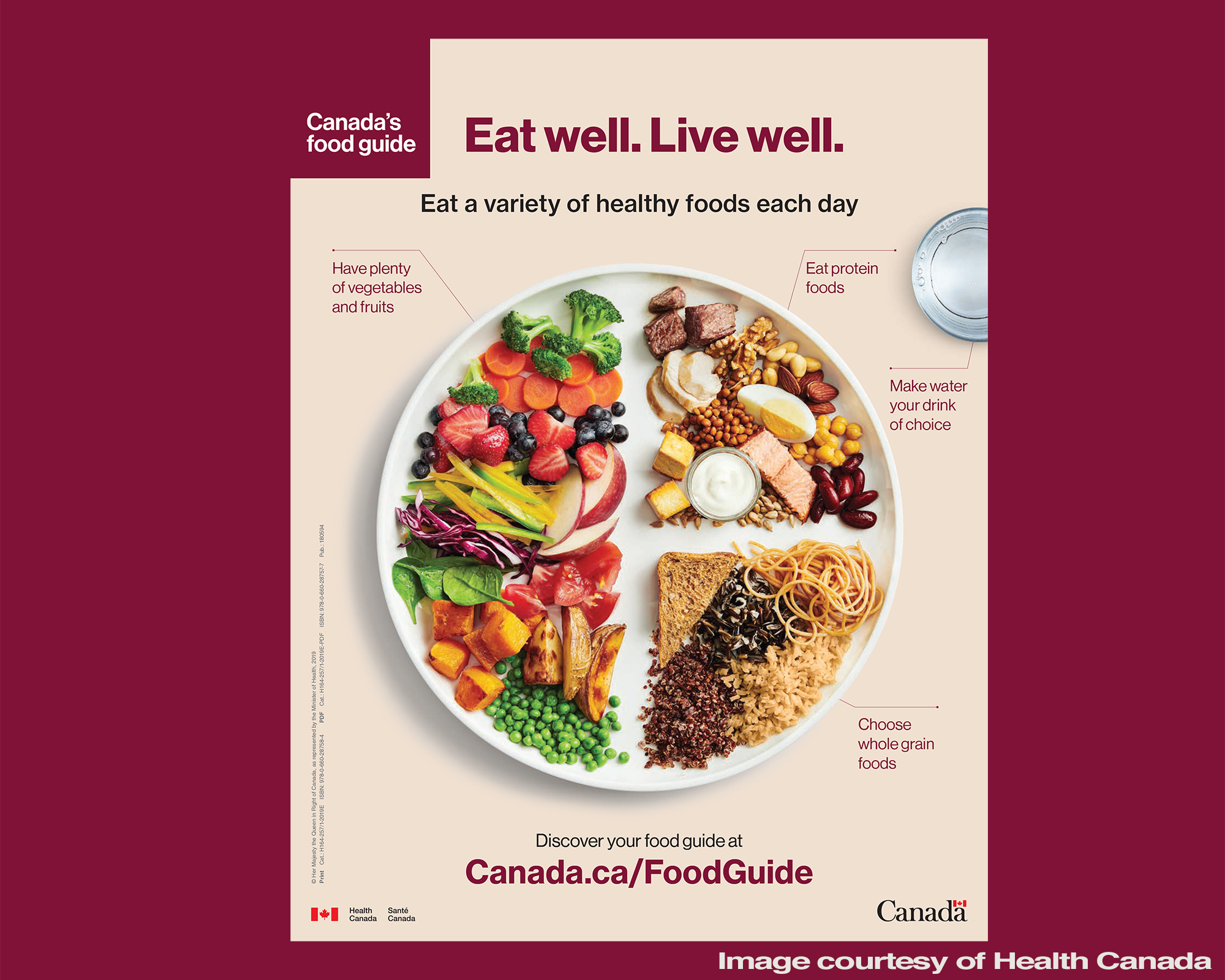With so many vastly different diets gaining popularity, it’s very hard to know what is the healthiest approach to eating a nutritious and balanced diet. But Canada’s Food Guide, which has recently been overhauled, may offer some sound advice. And it is quite a departure from the traditional food pyramid which included specific servings from each of four food groups.
The new guidelines focus on filling half your plate with vegetables and fruits, a quarter with whole grains and a quarter with proteins, especially plant-based proteins. It also stresses limiting processed foods with high levels of sodium, sugar and saturated fat. The 2019 guidelines reflect a significant change from the 2007 updated recommendations; meat and dairy are de-emphasized, water is named as the primary beverage of choice and it encourages mindful eating habits and cooking at home with friends and family.
Because of the cultural diversity of Canadians and the scarcity of fresh foods in remote parts of the country, the food guide attempts to focus on guiding principals rather than the number of servings in each food group. Some cultures don’t consume meat or dairy while other groups may have a hard time finding affordable fresh produce. The new guidelines offer alternatives for vegetarians, vegans and people with food allergies or intolerances. The environment is also a consideration in the new guide, encouraging Canadians to buy locally grown food and focusing on diets higher in plant-based foods and lower in animal-based foods, lessening the environmental impact. The new guidelines are very much in line with the DASH diet or the Mediterranean diet.
Older adults may take a little time to warm up to a new way of eating but there are numerous






Add Your Voice
0 Comments
Join the Discussion